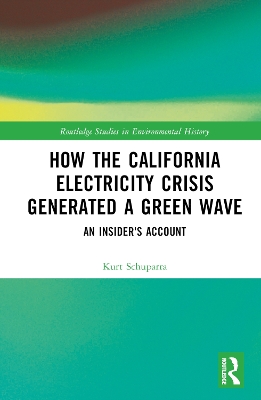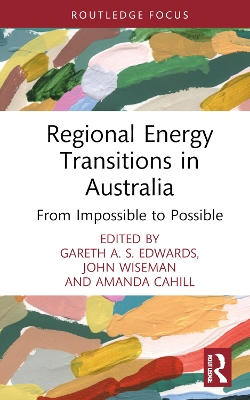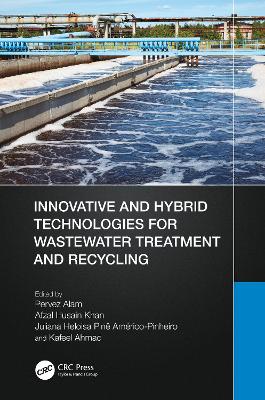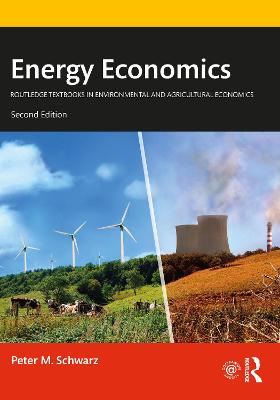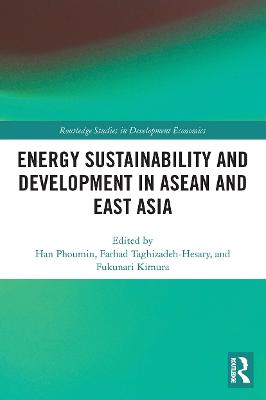Russia's Foreign Energy Policy
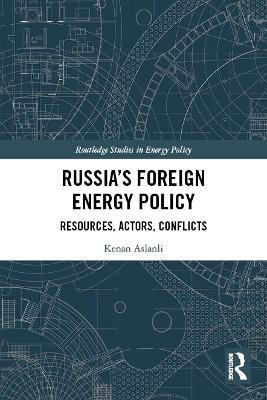 portes grátis
portes grátis
Russia's Foreign Energy Policy
Resources, Actors, Conflicts
Aslanli, Kenan
Taylor & Francis Ltd
12/2024
296
Mole
9781032528090
Pré-lançamento - envio 15 a 20 dias após a sua edição
Descrição não disponível.
Contents
LIST OF ABBREVIATIONS
LIST OF FIGURES AND TABLES
CHAPTER 1. INTRODUCTION
1.1. Research Rationale, Problematization, and Theoretical Framework
1.2. Research Design and Methodology
1.3. Research Methods
1.3.1. Semi-Structured Expert Interviews
1.3.2. The Methodology of RECSID and Statistical Data Analysis
1.3.3. Basic Content Analysis
1.4. Research's Limitations and Challanges
1.5. Contribution to the Existing Literature and Future Studies
1.6. Short Outline of the Following Chapters of the Book
CHAPTER 2. THEORETICAL FRAMEWORK
2.1. Overview of Basic Literature on Russia's Foreign Energy Policy
2.2. The Relevance and Operationalization of Complex Interdependence Theory
2.3. Review of the Alternative Theories on Russia's FEP
2.4. "Energy Weapon" and "Energy Superpower" Concepts
CHAPTER 3. CONCEPTUAL FRAMEWORK: FOREIGN POLICY, FOREIGN ENERGY POLICY, AND ENERGY CONFLICTS
3.1. Russia's Foreign Energy Policy and Grand Strategy
3.2. Russia's Militarist Strategic Culture and Foreign Energy Policy
3.3. Periods of Foreign Policy, Energy Dimension, and Domestic Conditions
3.4. USSR's FEP: Lesson Learnt for Russia
3.5. Overview and Objectives of Russia's FEP Pattern
3.6. Russia's Energy Conflicts and Tools of FEP
CHAPTER 4. EMPIRICAL CONTENT: ECONOMIC PERFORMANCE AND ENERGY RESOURCES
4.1. The Role of Energy in the Russian Economy and Economic Performance
4.1.1. Russia's economic growth and the share of oil-gas in GDP
4.1.2. Oil-gas reliance of the export and fiscal system
4.1.3. Forex reserves, debt, and FDI
4.1.4. Social development indicators and regional disparities
4.1.5. Russia's foreign trade and energy factor
4.1.6. Russia's foreign trade and technological backwardness
4.2. Russia's Energy Reserves and FEP
4.2.1. Russia's oil reserves
4.2.2. Russia's oil production
4.2.3. Russia's crude oil and petroleum products export
4.2.4. Russia's gas reserves and gas production
4.2.5. Russia's gas export
4.2.6. Coal reserves, production, and exports
4.2.7. The energy balance and renewables in Russia
CHAPTER 5. MAJOR ACTORS OF FEP: ENERGY COMPANIES, GOVERNMENT, AND STRATEGIC DOCUMENTS
5.1. Russian Energy Companies: Profiles and Global Networks
5.1.1. Gazprom
5.1.2. Rosneft
5.1.3. Lukoil
5.1.4. Transneft
5.1.5. Inter RAO UES
5.1.6. Rosatom
5.2. Concentration and Monopolization by the Russian Energy Companies
5.3. Foreign Energy Companies Operating in Russia
5.4. The Role of Government in the Russian FEP
5.5. Russia's Strategic Documents on Foreign and Energy Policy
CHAPTER 6. RUSSIA'S ENERGY CONFLICTS AND SUPPLY INTERRUPTIONS DATASET (RECSID)
6.1. Analysis of RECSID's Main Findings on Energy Conflicts in Russia
6.2. Russia's Energy Conflicts and Energy Types Based on RECSID
6.3. The Energy Conflicts, Oil Prices, and Domestic Politics Based on RECSID
6.4. Energy Conflicts and Economic Interdependence Based on RECSID
CHAPTER 7. MOTIVATIONS, DETERMINANTS, AND CONSTRAINTS OF RUSSIA'S FEP AND ENERGY CONFLICTS
7.1. Russia's Energy Conflicts with Major Energy Partners
7.2. Motivations of Russia's Energy Conflicts
7.3. Rebalancing of the Interdependence: Energy Diversification and Sanctions
7.4. Assumptions of Expert Interviews on Russia's FEP and Energy Conflicts
7.5. Basic Content Analysis of the Official Texts on the Russian FEP
7.6. Determinants and Constraints of Russia's Foreign Energy Policy
CHAPTER 8. CONCLUSION AND POLICY IMPLICATIONS
APPENDICES
Appendix 1. Correlation Ratios of Energy Conflicts and Various Indicators
Appendix 2. Indicators of the Energy Strategy of Russia for 2035
Appendix 3. 10 Major Indicators for National (Economic & Military) Power (2019)
Appendix 4. Examples from RECSID (Energy Conflict Tracker for Russia)
Index
LIST OF ABBREVIATIONS
LIST OF FIGURES AND TABLES
CHAPTER 1. INTRODUCTION
1.1. Research Rationale, Problematization, and Theoretical Framework
1.2. Research Design and Methodology
1.3. Research Methods
1.3.1. Semi-Structured Expert Interviews
1.3.2. The Methodology of RECSID and Statistical Data Analysis
1.3.3. Basic Content Analysis
1.4. Research's Limitations and Challanges
1.5. Contribution to the Existing Literature and Future Studies
1.6. Short Outline of the Following Chapters of the Book
CHAPTER 2. THEORETICAL FRAMEWORK
2.1. Overview of Basic Literature on Russia's Foreign Energy Policy
2.2. The Relevance and Operationalization of Complex Interdependence Theory
2.3. Review of the Alternative Theories on Russia's FEP
2.4. "Energy Weapon" and "Energy Superpower" Concepts
CHAPTER 3. CONCEPTUAL FRAMEWORK: FOREIGN POLICY, FOREIGN ENERGY POLICY, AND ENERGY CONFLICTS
3.1. Russia's Foreign Energy Policy and Grand Strategy
3.2. Russia's Militarist Strategic Culture and Foreign Energy Policy
3.3. Periods of Foreign Policy, Energy Dimension, and Domestic Conditions
3.4. USSR's FEP: Lesson Learnt for Russia
3.5. Overview and Objectives of Russia's FEP Pattern
3.6. Russia's Energy Conflicts and Tools of FEP
CHAPTER 4. EMPIRICAL CONTENT: ECONOMIC PERFORMANCE AND ENERGY RESOURCES
4.1. The Role of Energy in the Russian Economy and Economic Performance
4.1.1. Russia's economic growth and the share of oil-gas in GDP
4.1.2. Oil-gas reliance of the export and fiscal system
4.1.3. Forex reserves, debt, and FDI
4.1.4. Social development indicators and regional disparities
4.1.5. Russia's foreign trade and energy factor
4.1.6. Russia's foreign trade and technological backwardness
4.2. Russia's Energy Reserves and FEP
4.2.1. Russia's oil reserves
4.2.2. Russia's oil production
4.2.3. Russia's crude oil and petroleum products export
4.2.4. Russia's gas reserves and gas production
4.2.5. Russia's gas export
4.2.6. Coal reserves, production, and exports
4.2.7. The energy balance and renewables in Russia
CHAPTER 5. MAJOR ACTORS OF FEP: ENERGY COMPANIES, GOVERNMENT, AND STRATEGIC DOCUMENTS
5.1. Russian Energy Companies: Profiles and Global Networks
5.1.1. Gazprom
5.1.2. Rosneft
5.1.3. Lukoil
5.1.4. Transneft
5.1.5. Inter RAO UES
5.1.6. Rosatom
5.2. Concentration and Monopolization by the Russian Energy Companies
5.3. Foreign Energy Companies Operating in Russia
5.4. The Role of Government in the Russian FEP
5.5. Russia's Strategic Documents on Foreign and Energy Policy
CHAPTER 6. RUSSIA'S ENERGY CONFLICTS AND SUPPLY INTERRUPTIONS DATASET (RECSID)
6.1. Analysis of RECSID's Main Findings on Energy Conflicts in Russia
6.2. Russia's Energy Conflicts and Energy Types Based on RECSID
6.3. The Energy Conflicts, Oil Prices, and Domestic Politics Based on RECSID
6.4. Energy Conflicts and Economic Interdependence Based on RECSID
CHAPTER 7. MOTIVATIONS, DETERMINANTS, AND CONSTRAINTS OF RUSSIA'S FEP AND ENERGY CONFLICTS
7.1. Russia's Energy Conflicts with Major Energy Partners
7.2. Motivations of Russia's Energy Conflicts
7.3. Rebalancing of the Interdependence: Energy Diversification and Sanctions
7.4. Assumptions of Expert Interviews on Russia's FEP and Energy Conflicts
7.5. Basic Content Analysis of the Official Texts on the Russian FEP
7.6. Determinants and Constraints of Russia's Foreign Energy Policy
CHAPTER 8. CONCLUSION AND POLICY IMPLICATIONS
APPENDICES
Appendix 1. Correlation Ratios of Energy Conflicts and Various Indicators
Appendix 2. Indicators of the Energy Strategy of Russia for 2035
Appendix 3. 10 Major Indicators for National (Economic & Military) Power (2019)
Appendix 4. Examples from RECSID (Energy Conflict Tracker for Russia)
Index
Este título pertence ao(s) assunto(s) indicados(s). Para ver outros títulos clique no assunto desejado.
Russia's foreign policy;Russia's energy policy;energy conflict;energy security;energy weapon;energy geopolitics;Energy Resources;Foreign Energy Policy;Energy Policy;Energy Conflicts;Inter RAO UES;RAO UES;Oil Gas Companies;Complex Interdependence Theory;Basic Content Analysis;Energy Factor;Russian Energy Companies;CIS Country;Foreign Energy;Oil Gas Prices;Inter RAO;Gas Conflicts;Foreign Policy Concept;Energy Balance;Gazprom Neft;Energy Superpower;Russia's Foreign Trade;EU's Energy;Oil Conflicts
Contents
LIST OF ABBREVIATIONS
LIST OF FIGURES AND TABLES
CHAPTER 1. INTRODUCTION
1.1. Research Rationale, Problematization, and Theoretical Framework
1.2. Research Design and Methodology
1.3. Research Methods
1.3.1. Semi-Structured Expert Interviews
1.3.2. The Methodology of RECSID and Statistical Data Analysis
1.3.3. Basic Content Analysis
1.4. Research's Limitations and Challanges
1.5. Contribution to the Existing Literature and Future Studies
1.6. Short Outline of the Following Chapters of the Book
CHAPTER 2. THEORETICAL FRAMEWORK
2.1. Overview of Basic Literature on Russia's Foreign Energy Policy
2.2. The Relevance and Operationalization of Complex Interdependence Theory
2.3. Review of the Alternative Theories on Russia's FEP
2.4. "Energy Weapon" and "Energy Superpower" Concepts
CHAPTER 3. CONCEPTUAL FRAMEWORK: FOREIGN POLICY, FOREIGN ENERGY POLICY, AND ENERGY CONFLICTS
3.1. Russia's Foreign Energy Policy and Grand Strategy
3.2. Russia's Militarist Strategic Culture and Foreign Energy Policy
3.3. Periods of Foreign Policy, Energy Dimension, and Domestic Conditions
3.4. USSR's FEP: Lesson Learnt for Russia
3.5. Overview and Objectives of Russia's FEP Pattern
3.6. Russia's Energy Conflicts and Tools of FEP
CHAPTER 4. EMPIRICAL CONTENT: ECONOMIC PERFORMANCE AND ENERGY RESOURCES
4.1. The Role of Energy in the Russian Economy and Economic Performance
4.1.1. Russia's economic growth and the share of oil-gas in GDP
4.1.2. Oil-gas reliance of the export and fiscal system
4.1.3. Forex reserves, debt, and FDI
4.1.4. Social development indicators and regional disparities
4.1.5. Russia's foreign trade and energy factor
4.1.6. Russia's foreign trade and technological backwardness
4.2. Russia's Energy Reserves and FEP
4.2.1. Russia's oil reserves
4.2.2. Russia's oil production
4.2.3. Russia's crude oil and petroleum products export
4.2.4. Russia's gas reserves and gas production
4.2.5. Russia's gas export
4.2.6. Coal reserves, production, and exports
4.2.7. The energy balance and renewables in Russia
CHAPTER 5. MAJOR ACTORS OF FEP: ENERGY COMPANIES, GOVERNMENT, AND STRATEGIC DOCUMENTS
5.1. Russian Energy Companies: Profiles and Global Networks
5.1.1. Gazprom
5.1.2. Rosneft
5.1.3. Lukoil
5.1.4. Transneft
5.1.5. Inter RAO UES
5.1.6. Rosatom
5.2. Concentration and Monopolization by the Russian Energy Companies
5.3. Foreign Energy Companies Operating in Russia
5.4. The Role of Government in the Russian FEP
5.5. Russia's Strategic Documents on Foreign and Energy Policy
CHAPTER 6. RUSSIA'S ENERGY CONFLICTS AND SUPPLY INTERRUPTIONS DATASET (RECSID)
6.1. Analysis of RECSID's Main Findings on Energy Conflicts in Russia
6.2. Russia's Energy Conflicts and Energy Types Based on RECSID
6.3. The Energy Conflicts, Oil Prices, and Domestic Politics Based on RECSID
6.4. Energy Conflicts and Economic Interdependence Based on RECSID
CHAPTER 7. MOTIVATIONS, DETERMINANTS, AND CONSTRAINTS OF RUSSIA'S FEP AND ENERGY CONFLICTS
7.1. Russia's Energy Conflicts with Major Energy Partners
7.2. Motivations of Russia's Energy Conflicts
7.3. Rebalancing of the Interdependence: Energy Diversification and Sanctions
7.4. Assumptions of Expert Interviews on Russia's FEP and Energy Conflicts
7.5. Basic Content Analysis of the Official Texts on the Russian FEP
7.6. Determinants and Constraints of Russia's Foreign Energy Policy
CHAPTER 8. CONCLUSION AND POLICY IMPLICATIONS
APPENDICES
Appendix 1. Correlation Ratios of Energy Conflicts and Various Indicators
Appendix 2. Indicators of the Energy Strategy of Russia for 2035
Appendix 3. 10 Major Indicators for National (Economic & Military) Power (2019)
Appendix 4. Examples from RECSID (Energy Conflict Tracker for Russia)
Index
LIST OF ABBREVIATIONS
LIST OF FIGURES AND TABLES
CHAPTER 1. INTRODUCTION
1.1. Research Rationale, Problematization, and Theoretical Framework
1.2. Research Design and Methodology
1.3. Research Methods
1.3.1. Semi-Structured Expert Interviews
1.3.2. The Methodology of RECSID and Statistical Data Analysis
1.3.3. Basic Content Analysis
1.4. Research's Limitations and Challanges
1.5. Contribution to the Existing Literature and Future Studies
1.6. Short Outline of the Following Chapters of the Book
CHAPTER 2. THEORETICAL FRAMEWORK
2.1. Overview of Basic Literature on Russia's Foreign Energy Policy
2.2. The Relevance and Operationalization of Complex Interdependence Theory
2.3. Review of the Alternative Theories on Russia's FEP
2.4. "Energy Weapon" and "Energy Superpower" Concepts
CHAPTER 3. CONCEPTUAL FRAMEWORK: FOREIGN POLICY, FOREIGN ENERGY POLICY, AND ENERGY CONFLICTS
3.1. Russia's Foreign Energy Policy and Grand Strategy
3.2. Russia's Militarist Strategic Culture and Foreign Energy Policy
3.3. Periods of Foreign Policy, Energy Dimension, and Domestic Conditions
3.4. USSR's FEP: Lesson Learnt for Russia
3.5. Overview and Objectives of Russia's FEP Pattern
3.6. Russia's Energy Conflicts and Tools of FEP
CHAPTER 4. EMPIRICAL CONTENT: ECONOMIC PERFORMANCE AND ENERGY RESOURCES
4.1. The Role of Energy in the Russian Economy and Economic Performance
4.1.1. Russia's economic growth and the share of oil-gas in GDP
4.1.2. Oil-gas reliance of the export and fiscal system
4.1.3. Forex reserves, debt, and FDI
4.1.4. Social development indicators and regional disparities
4.1.5. Russia's foreign trade and energy factor
4.1.6. Russia's foreign trade and technological backwardness
4.2. Russia's Energy Reserves and FEP
4.2.1. Russia's oil reserves
4.2.2. Russia's oil production
4.2.3. Russia's crude oil and petroleum products export
4.2.4. Russia's gas reserves and gas production
4.2.5. Russia's gas export
4.2.6. Coal reserves, production, and exports
4.2.7. The energy balance and renewables in Russia
CHAPTER 5. MAJOR ACTORS OF FEP: ENERGY COMPANIES, GOVERNMENT, AND STRATEGIC DOCUMENTS
5.1. Russian Energy Companies: Profiles and Global Networks
5.1.1. Gazprom
5.1.2. Rosneft
5.1.3. Lukoil
5.1.4. Transneft
5.1.5. Inter RAO UES
5.1.6. Rosatom
5.2. Concentration and Monopolization by the Russian Energy Companies
5.3. Foreign Energy Companies Operating in Russia
5.4. The Role of Government in the Russian FEP
5.5. Russia's Strategic Documents on Foreign and Energy Policy
CHAPTER 6. RUSSIA'S ENERGY CONFLICTS AND SUPPLY INTERRUPTIONS DATASET (RECSID)
6.1. Analysis of RECSID's Main Findings on Energy Conflicts in Russia
6.2. Russia's Energy Conflicts and Energy Types Based on RECSID
6.3. The Energy Conflicts, Oil Prices, and Domestic Politics Based on RECSID
6.4. Energy Conflicts and Economic Interdependence Based on RECSID
CHAPTER 7. MOTIVATIONS, DETERMINANTS, AND CONSTRAINTS OF RUSSIA'S FEP AND ENERGY CONFLICTS
7.1. Russia's Energy Conflicts with Major Energy Partners
7.2. Motivations of Russia's Energy Conflicts
7.3. Rebalancing of the Interdependence: Energy Diversification and Sanctions
7.4. Assumptions of Expert Interviews on Russia's FEP and Energy Conflicts
7.5. Basic Content Analysis of the Official Texts on the Russian FEP
7.6. Determinants and Constraints of Russia's Foreign Energy Policy
CHAPTER 8. CONCLUSION AND POLICY IMPLICATIONS
APPENDICES
Appendix 1. Correlation Ratios of Energy Conflicts and Various Indicators
Appendix 2. Indicators of the Energy Strategy of Russia for 2035
Appendix 3. 10 Major Indicators for National (Economic & Military) Power (2019)
Appendix 4. Examples from RECSID (Energy Conflict Tracker for Russia)
Index
Este título pertence ao(s) assunto(s) indicados(s). Para ver outros títulos clique no assunto desejado.
Russia's foreign policy;Russia's energy policy;energy conflict;energy security;energy weapon;energy geopolitics;Energy Resources;Foreign Energy Policy;Energy Policy;Energy Conflicts;Inter RAO UES;RAO UES;Oil Gas Companies;Complex Interdependence Theory;Basic Content Analysis;Energy Factor;Russian Energy Companies;CIS Country;Foreign Energy;Oil Gas Prices;Inter RAO;Gas Conflicts;Foreign Policy Concept;Energy Balance;Gazprom Neft;Energy Superpower;Russia's Foreign Trade;EU's Energy;Oil Conflicts

